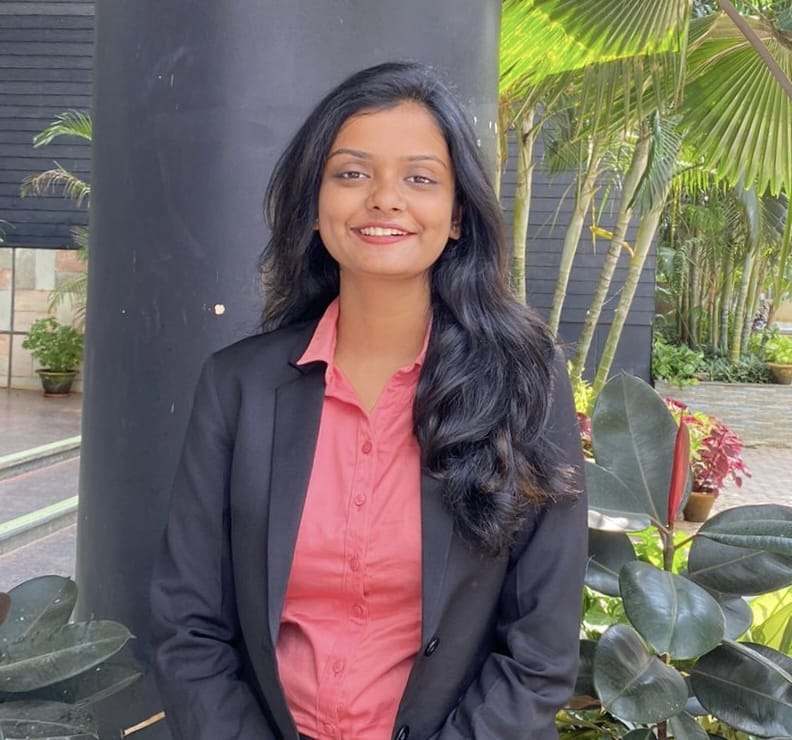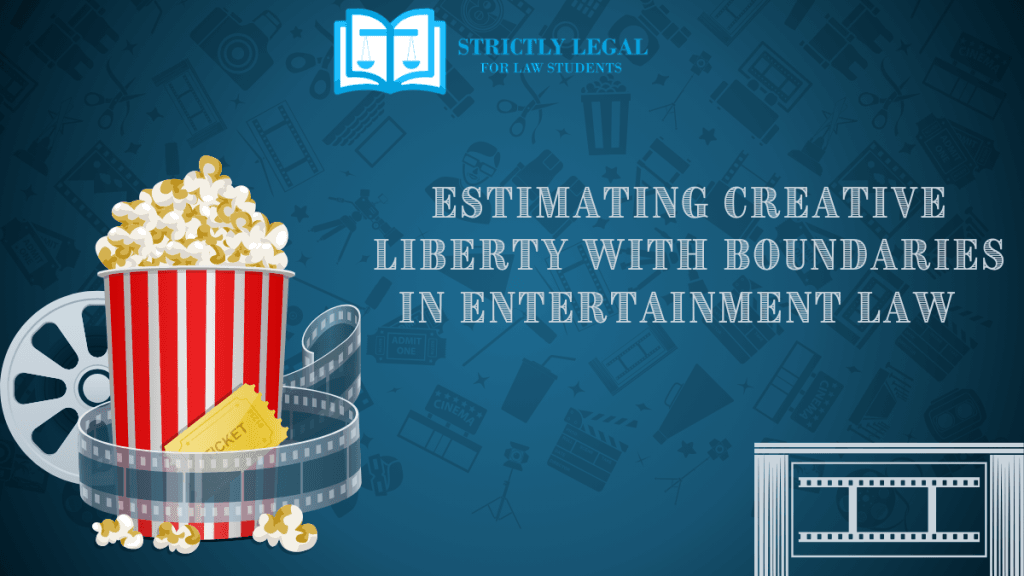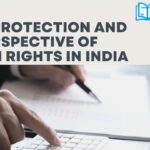The intricate relationship between artistic freedom and the legal constraints put in place to make sure that content doesn’t violate public order, national security, or social norms is navigated by entertainment law. The balance between artistic freedom and legal restrictions is especially important in nations like India, where Article 19 of the Indian Constitution offers a vital framework for comprehending freedom of expression in the entertainment sector.
The freedom of speech granted to people working in the entertainment sector, such as singers, artists, filmmakers, and other creators, is known as creative liberty. Innovation, self-expression, and the exchange of political, social, and cultural ideas all depend on this freedom. From literature and music to visual arts and film, creative liberty in entertainment covers a broad spectrum of artistic expressions. For creators, the ability to express their ideas and perspectives without undue restriction is a cornerstone of a thriving artistic community. This freedom fosters diversity in content, allowing for critical social commentary, exploration of taboo subjects, and the reflection of varying cultural norms. However, in India, the Constitution of India guarantees Freedom of Speech under Article 19 as a fundamental rights under Part III which is further subjected to certain reasonable restrictions outlined under Article 19(2). Article 19(2) lists the grounds on which freedom of speech and expression may be restricted. These grounds are designed to protect public interest, social order, and individual rights, while ensuring that freedom of expression is not misused in ways that harm society.
Table of Contents
Creative Liberty in Entertainment Law
Creative liberty is the freedom that an artist has to dream, create, and share a variety of opinions and expressions without interference from the government, political parties, or other forces. It is crucial for the welfare and raising the bar of our society and involves the right of all citizens to enjoy these works. Section 14 of the Copyright Act of 1957 safeguards the intellectual property rights of an author’s created literary, artistic, and creative works to protect the author and encourage the production of such works. The Right to Freedom of Speech has been enumerated under Article 19 of the Constitution of India. In it’s broader explanation Article 19(1)(a) also enumerates the fundamental rights so promised which can be curved into the Notion of Creative Liberty.
- Right to Publish and Circulate: A newspaper’s right under Article 19(1)(a) encompasses both its publication and distribution. Laws that directly impact newspaper circulation could not be made by the state.
- Right to Broadcast: A citizen’s right to screen a movie on Doordarshan is a fundamental right, subject to the restrictions set by Doordarshan. “This right is comparable to a citizen’s right to express his opinions through any other medium- including newspapers, magazines, advertisements, hoardings, etc.,” the court ruled.
- Right to dissent: The Supreme Court ruled in a case involving criminal allegations against movie star Khushboo for her opinions on premarital sex in urban India that a person has the freedom to hold unpopular or unconventional beliefs. The court ruled that criminal law could not be used to encroach on the realm of personal autonomy because “notions of social morality are inherently subjective.”
- Right to portray Social Evils: The right to portray social evils through various forms of media, such as films, literature, music, and visual arts, is an important facet of freedom of expression. Artists and creators often use their work to critique and highlight societal issues, including social evils like corruption, inequality, discrimination, gender-based violence, and other harmful practices. This portrayal plays a significant role in raising awareness, initiating social change, and challenging oppressive systems.
- Right to entertain and to be entertained: The term “expression” under Article 19 (1)(a) includes the right of an individual to entertain as well as the right of the audience to be entertained.
Constitutional Limitations on Creative Liberty
The concept of liberty is not absolute; rather, it is subject to reasonable limitations in order to safeguard the rights of others. Although an artist’s imagination is unrestricted and should not be, there are certain restrictions on how it can be carried out. Until it offends someone, there is nothing wrong with asserting that freedom of expression is legitimate in every way. The word “reasonable,” however, is up to the court’s judgment and gives the people of the nation the ability to petition the courts for judicial review. In 1963, the government was given the authority to restrict the liberties protected by Article 19(1)(a) of the constitution in the interest of “the sovereignty and integrity of India,” according to the Sixteenth Constitutional Amendment, often known as the Second Amendment to Article 19. Following this revision, the following aspects of Article 19(2) allow for the imposition of reasonable limitations on the artistic and creative freedoms of filmmakers and artists.
Case Laws defining “Reasonable Restrictions”
Romesh Thappar v. State of Madras (1950)
The Supreme Court held that freedom of speech and expression is essential for the functioning of democracy. However, it also held that this freedom can be restricted in the interest of public order.
Bennett Coleman & Co. v. Union of India (1973)
The Court reaffirmed that restrictions on free speech must be based on substantial grounds and cannot be excessive. This case explored the interplay between public interest and individual freedoms.
K.A. Abbas v. Union of India (1970)
The Supreme Court upheld the power of the government to impose restrictions on films that were deemed to be against public morality, reinforcing the need for censorship under reasonable restrictions.
Shreya Singhal v. Union of India (2015)
The Supreme Court struck down Section 66A of the Information Technology Act, which penalized offensive online content. The Court held that the law was overly broad and violated the fundamental right to free speech under Article 19(1)(a), thereby affirming the need for restrictions to be proportionate and specific.
Cause for Reasonable Restriction
Article 19(2) lists the grounds on which freedom of speech and expression may be restricted. These grounds are designed to protect public interest, social order, and individual rights, while ensuring that freedom of expression is not misused in ways that harm society.
Sovereignty and Integrity of India
Freedom of speech and expression can be limited if the content threatens the sovereignty, integrity, or unity of India. This includes expressions or publications that advocate for secession, rebellion, or any acts that might threaten the territorial integrity of the nation. For an example, inciting separatist movements or promoting the disintegration of India would fall under this restriction.
Security of the State
Speech or expression that could compromise the security of the state, such as promoting or inciting violence, terrorism, or any activities that could harm national defense, are subject to restriction. Spreading false information that can create panic or incite violent actions affecting national security can be restricted under this clause.
Friendly Relations with Foreign States
Freedom of expression can be limited if it harms the relationship between India and other foreign states. This includes expressions that may encourage hostility, war, or diplomatic tensions with other countries.
Decency or Morality
The right to free speech and expression can be restricted if the content violates public decency or moral standards. This includes obscene, indecent, or vulgar content that is deemed harmful to societal norms.
Contempt of Court
Freedom of speech can be limited to prevent contempt of court, which includes acts or words that disrespect, undermine, or obstruct the authority of the judiciary. This includes comments that could scandalize or lower the authority of the courts. Publishing false or defamatory content about the judiciary or making statements that undermine the judicial process could be restricted to prevent contempt.
Defamation
Defamation refers to the act of damaging a person’s reputation by making false and harmful statements about them. Free speech can be restricted to protect individuals or entities from defamation. If an individual makes false accusations against another person, damaging their reputation, such statements can be legally restricted under defamation laws.
Incitement to an Offense
Speech or expression that incites or encourages others to commit an illegal or criminal act can be restricted. This ensures that freedom of speech is not used to promote criminal activity or violence. Promoting hate crimes, terrorism, or any other form of violence could be restricted to avoid encouraging unlawful acts.
Conclusion
Reasonable restrictions under Article 19(2) of the Indian Constitution are essential for balancing the fundamental right to freedom of speech and expression with the protection of public interests such as national security, public order, decency, and individual rights. While the right to free speech is vital for a democratic society, these restrictions ensure that speech and expression do not harm the broader public interest or lead to societal harm. The test of “reasonableness” ensures that the restrictions are not arbitrary and are justifiable under the specific circumstances. Ultimately, the restrictions aim to maintain harmony between individual freedoms and the collective well-being of society.

Law student.
Turning legal insights into engaging narratives.





